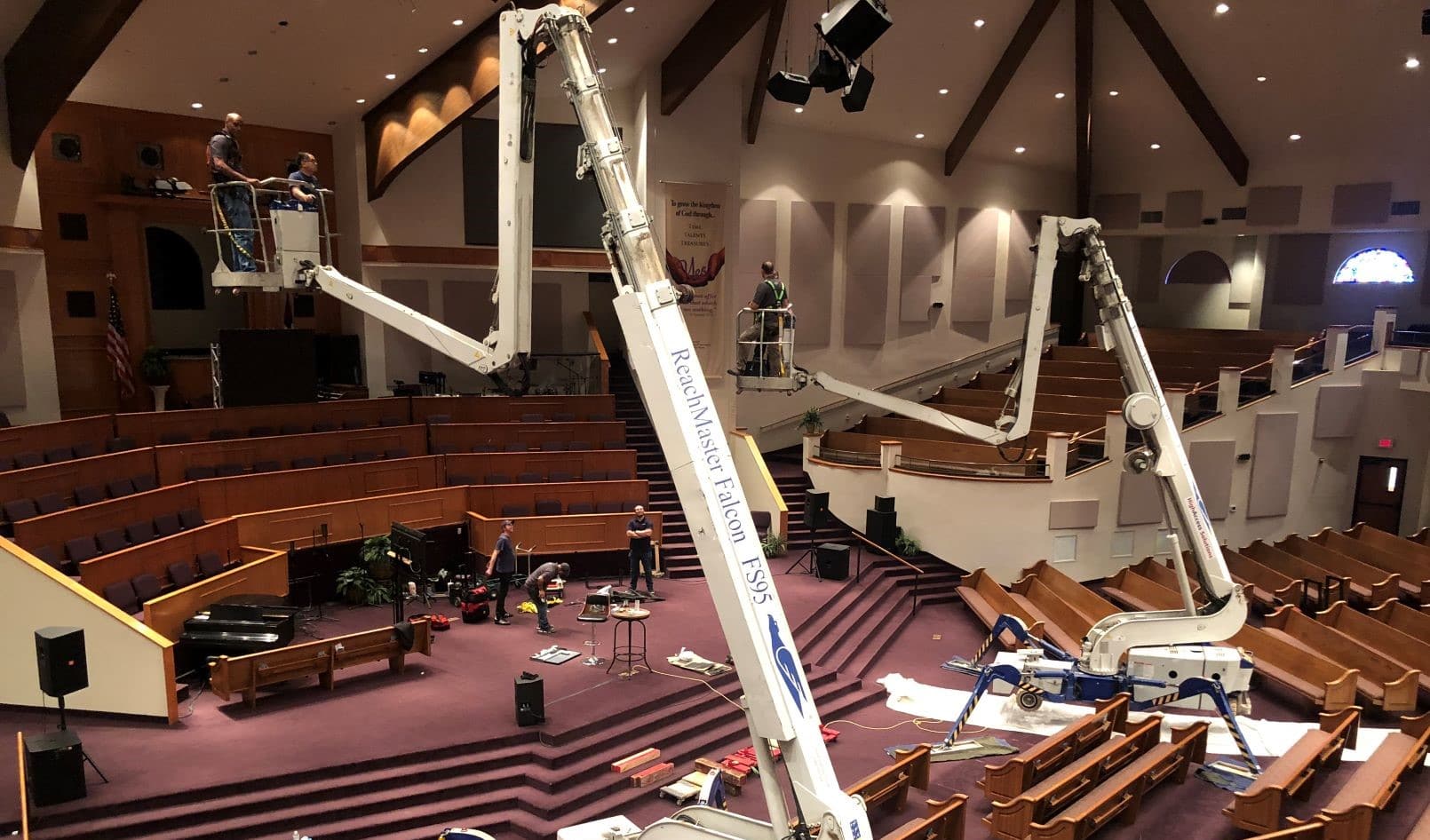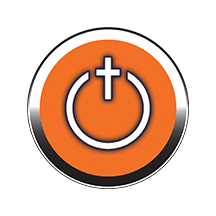By Paul Ptak
Working above 30 feet inside a sanctuary can be a real challenge today. With ever-higher ceilings, architectural beams, and seating and pews in the way, it can be difficult to reach the highest points for lighting, maintenance, A/C duct cleaning, emergency light batteries, ceiling repairs or the popular LED lighting retrofit.
Many churches also have theatrical lights and projectors that need their bulbs changed, updated, or just need to be redirected. Very few facilities have access to their lights from catwalks or a pully system to lower and raise lights for maintenance.
There are a limited number of ways to complete this high reach maintenance above 30 feet. Some churches use rolling scaffolding, scissor lifts or other types of large or heavy lifts to do the work.
However, this can be dangerous and damage floors, carpet, and furnishings. These methods also entail moving a lot of pews and/or seating, which can take time and can damage the pews and seats. These methods are also time consuming and put your facility personnel in danger.
The newest state-of-the-art solution is to use a compact aerial lift. They are the safest, least intrusive, and least expensive solution to a worship center’s lighting or maintenance project. These lifts are much smaller and lighter than a scissor lift or boom lift. They will easily go into a church through a single or double door and move up and down the aisles with ease. These types of lifts go by many names: compact lift, atrium lift, telescopic lift, articulating lift, compact crawler lift, spider lift and aerial lift.
Before renting a compact aerial lift, it is important to understand exactly which lift is needed to complete the project. It is essential that the lift is no wider than 40 inches when folded down for ease of access and making turns inside the sanctuary. The length of the lift when folded down should also be considered if there are any tight turns that must be negotiated to gain access to the sanctuary.
Prior to renting a lift, make sure that the lift will reach all the work areas that need to be accessed. We recommend using an inexpensive laser distance meter that can be purchased at any hardware store for less than $100 to measure vertically and horizontally. Many facility managers try to guess the height and reach, and we have found that many times they are not correct.
In more than a decade of servicing worship centers’ high access needs, we have found that 95% of the lights in a facility are easy to reach, but it seems that there are always a few that are extremely hard to reach. So, measuring correctly is important. Getting the measurements correct the first time can alleviate having the wrong lift delivered and wasting time and money getting the right lift to replace it.
After measuring for ceiling height (vertical distance), the horizontal distance should also be measured from the position of the lift on the ground to the light fixture or work area that must be accessed. Horizontal reach is just as important as vertical reach.
Using a lift that provides that correct horizontal reach will save time, effort, and money because this will mean the lift needs to be moved into a different position less times. Less moves means less pews/seating to move and less time to complete the project.
Prior to renting a compact aerial lift, please consider the following:
- Measure as described above in order to rent the correct lift.
- Decide who is going to operate the lift once it is delivered.
- Are there any steps or tight turns outside the church that need to be negotiated?
- What type of sidewalk is there? Are there paving stones or landscape that need to be protected?
- Is there double or single door access?
- Protect the door threshold; a lift can crush or bend the aluminum.
- Be aware of flooring transitions; going from tile to carpet or carpet to tile can crack tile or damage carpet without the proper protection.
- All floors inside should be protected with plywood, plastic or other materials.
- Even with a compact lift, some pews will need to be moved. Who will move them? Be aware if the pews have seams. If so, extra care needs to be taken so they do not separate at the seam.
- We recommend at least three men for moving pews. You may want to purchase hydraulic pew movers. They make moving pews much easier with less damage to the pew and to your back.
- Plan the setup locations of the lift ahead of time. By planning the best access areas much time can be saved with fewer lift moves.
- After the project, replacing of pews is harder than removing them because of the floor pegs that hold the pews in place. They can be bent very easily. Hydraulic pew movers are the answer here also.
With proper planning, your project can be completed smoothly, quickly and economically.
Paul Ptak is operations manager at High Access Solutions, a full-service compact aerial lift rental company and high access service provider, www.wereachhigh.com or (817) 243-6800.












